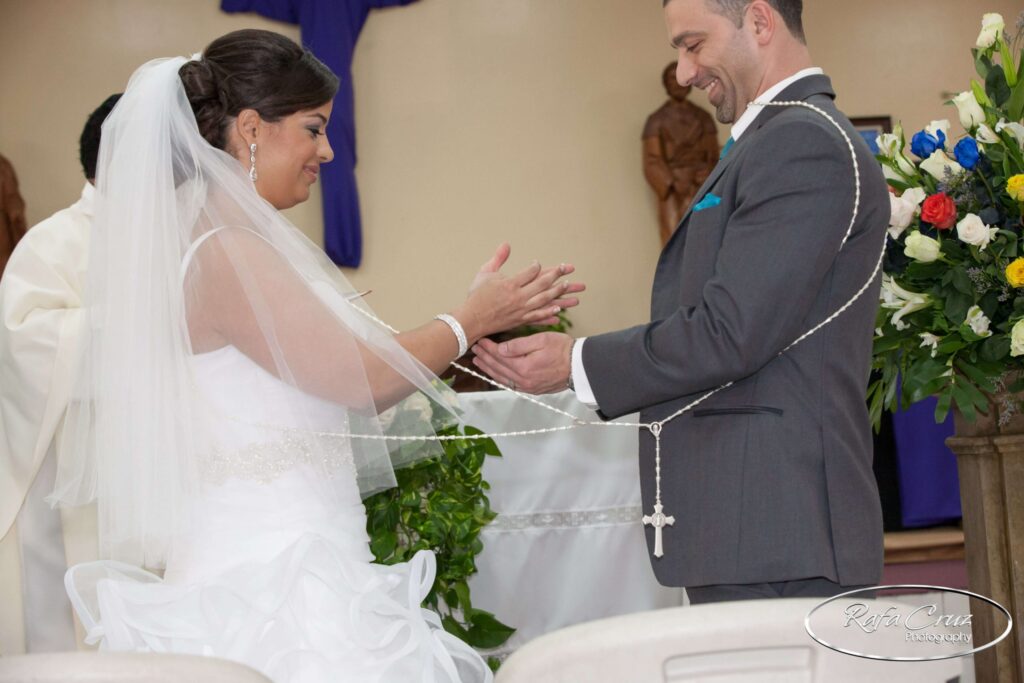June Wedding – a la mejicana
A thunderstorm roared through this morning, knocking out the electricity, uprooting a dozen trees, and producing excellent mosquito hatch conditions. This is exactly the type of morning you don’t want to wake up to if you have planned an outdoor wedding.
June is known as the wedding month, an unexpected topic for my musings, as I am not a fan of the role cast to women of being “given away.” Over the past year, I haven’t had occasion to go out and have forgotten how to dress up or, more precisely, lost interest. I do still cherish traditions and meaningful rituals, so I’ll forge ahead. I’m always curious about mores and the ancient symbolism.
There are many similarities between the mostly Catholic Mexican ceremonies and my Protestant experiences. Both have traditions of white dresses, veils, bridesmaids, groomsmen, cakes, dancing, flowers, and even overlap with the, in my opinion, embarrassing removal of the garter moment. Despite similarities, I was ignorant of the histories. Long trains and veils originated in the belief that these items would disguise the bride from the “evil” spirits desiring to disperse bad luck on the newlyweds. Bridesmaids, dressed in various colors, were decoys, per se, used to further fluster the evil ones from finding the bride – a good thing to know.
Regardless of class status, everyone is dressed in their best. In Mexico, this ranges from full mariachi regalia including spurs on their boots to the charro hats on their heads, while others choose native weaves and colors of the region worn respectful of their ancestors. The arrival of the bride on the arm of her father parallels the traditional Christian ceremony of the north, until the part where the padrinos appear, helping out with every aspect of the ceremony.
Padrinos are friends or family members chosen to be responsible for parts of the big day. When a child is born, padrinos, godparents, are selected to be guardians for a lifetime. The wedding padrinos are separate. They have the honor of being in charge of, and paying for, sections of the ceremony. There is the lasso, the Arras, the veil, the Bible, the bouquet for the Virgen de Guadalupe, oh so many details! And that all happens before the reception’s conga dance including. . . well, read on.

I became aware of all this at a wedding when two padrinos were summoned by the priest to “bring the cord” to the altar. A cord? They brought with them a sparkling, beaded lasso with two large loops, one to go over each head, with a cross dangling between. The padrinos gently placed the lasso as the priest declared “the two are now one” connected with God, symbolized by the cross.
Two more padrinos came forward with the Arras, earnest money, a tradition brought from Spain. The groom offers thirteen coins, twelve gold and one of platinum, to the bride as a promise to provide for their family. The money arrives on an elaborately decorated tray or possibly, in a velvet purse or ornate box before the groom pours them into the brides open palms. These coins are said to also represent Jesus and his twelve apostles. The thirteenth coin is to remind them to be charitable to others.
While receiving the coins, the bride vows to be a good caretaker of the finances. That exchange has reformed itself over time to represent the combination of resources brought to the marriage by both. Shared wealth and mutual talents will join for betterment of the family unit. This is often followed by presenting a bouquet and a prayer to the Virgen de Guadalupe, patron saint of Mexico, whose image is found throughout Mexico. She’s even present on T-shirts, pencils, key chains, and refrigerator magnets.

The ceremony winds down during a special moment uniting the two families with a show of support for the new couple. The groom’s parents stand behind the bride, and bride’s family beside the groom, laying their hands on the couple in mutual blessings and well-wishing. Being surrounded by that love and assistance is a deeply warm demonstration melding the families together going forward.
The reception has many rituals, but I only just discovered “La Vibora de la Mar – the Sea Serpent” dance, while searching YouTube videos for clips of Mexican wedding traditions. This dance, much like the children’s “London Bridge is Falling Down” popped up everywhere, so it must be included here under wedding music and dance.
The bride and groom stand on two opposing chairs, being physically supported by one or two friends, while holding on to the bride’s veil between them. A conga line of single women, followed by a group of single men, snake dance around the room as the music goes faster and faster. On several occasions, the veil is lowered, trapping a dancer under the bridge. I wasn’t ready to see the next move!
2minutes 50 seconds. Join the Vibora de la Mar dance and see what happens to the groom… Good things to know before you attend…
In some families, the trapped dancer raised their head, opened their mouths like baby birds, and the bride or groom drizzled tequila straight from the bottle down their throats. Are you aware there is a worm at the bottom of the bottle? What, I wonder, happens then?
Speaking of worms, the storm is pounding us with torrents of rain driving them out into the road in droves. After rains, my granddaughter and I have a custom, or should I say a tradition, of saving the drowning crawlers by tossing them back into the grasses. The electricity is back on, but so is the lightening. It’s not a good time for us, yet. It is a good time for the spring peepers and that new hatch of mosquitos. But, it would not be a good day for a June wedding, with or without the tequila.

